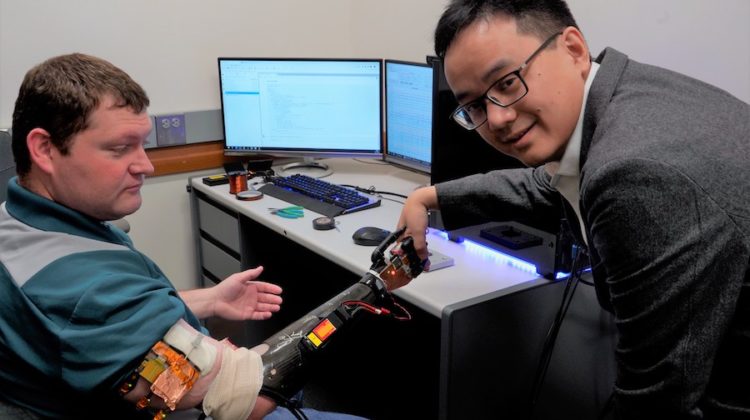
Researchers at the University of Minnesota Twin Cities have developed a system that enables amputees to move a robotic arm using signals from their brain via a small, implantable device attached to the peripheral nerve of their own arm and an AI-enabled computer.
‘It’s a lot more intuitive than any commercial system out there,’ said Jules Anh Tuan Nguyen, a postdoctoral researcher in the university’s Department of Biomedical Engineering. ‘With other commercial prosthetic systems, when amputees want to move a finger, they don’t actually think about moving a finger. They’re trying to activate the muscles in their arm since that’s what the system reads. Our technology knows the patient’s intention. If they want to move a finger, all they have to do is think about moving that finger.’
The system represents a step forward from previous brain-controlled prosthetics, which require chips implanted inside the brain and connected to the outside via a port in the skull. It uses artificial intelligence and machine learning to help interpret the signals from brain to the nerve, which the researchers suggest could make the system work well compared to similar technologies.
‘Artificial intelligence has the tremendous capability to help explain a lot of relationships,’ said Zhi Yang, an associate professor of biomedical engineering at the University of Minnesota. ‘This technology allows us to record human data, nerve data, accurately. With that kind of nerve data, the AI system can fill in the gaps and determine what’s going on. That’s a really big thing – to be able to combine this new chip technology with AI. It can help answer a lot of questions we couldn’t answer before.’
According to Yang, the technology could be used for other patients who have neurological disorders and chronic pain.
While the new system currently requires wires that come through the skin to connect to the exterior AI interface and robotic arm, the researchers envision a chip that could connect remotely to a computer, which could enable people to control other devices, such as a phone or car, using their minds.
‘Some of these things are actually happening. A lot of research is moving from what’s in the so-called “fantasy” category into the scientific category,’ Yang said. ‘This technology was designed for amputees for sure, but if you talk about its true potential, this could be applicable to all of us.’
The research has been published in the Journal of Neural Engineering.


